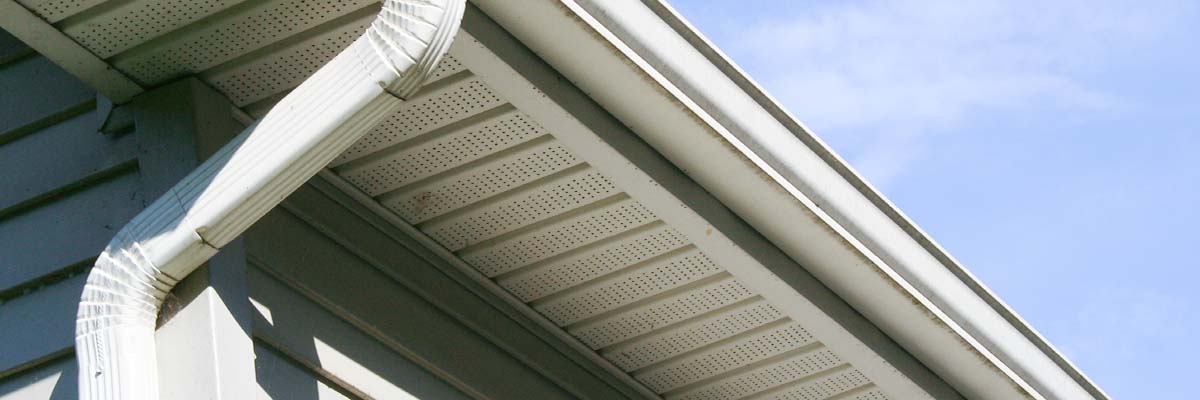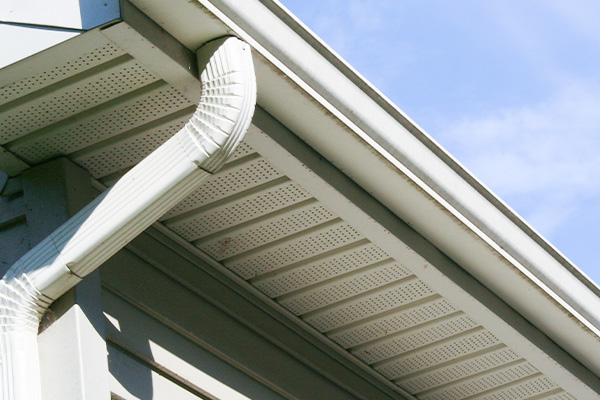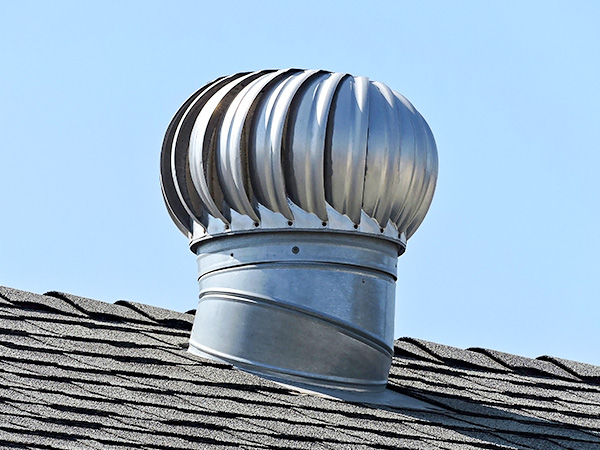

Soffits and the Importance of Roof Ventilation
Many essential components of your home often go unnoticed, and soffits are one of those features. You may not be aware they make a significant impact on your home ventilation. Available in various types, soffits can complement the roof design while still providing important air flow. This functionality goes a long way in helping with your indoor air quality, reducing the humidity and moisture buildup in the attic, and preventing your roof shingles from wearing out faster. Here is what you need to know about soffits and roof vents and why they're crucial for your home.
Roofing Ventilation Basics
Having sufficient roofing ventilation keeps your roofing materials in good condition by reducing moisture buildup that can cause rot. Ventilation reduces the chance of mold and mildew growth, which can impact the roof's appearance and cause structural damage. Roof ventilation also keeps the attic from becoming too humid, helping the energy efficiency of your home by decreasing how hard your HVAC system works.
When it comes to roofing ventilation, intake vents and exhaust vents are both needed. Intake vents allow fresh air to flow into your attic. Exhaust vents do the opposite and allow warm inside air to escape outside. An efficient roofing ventilation system requires the use of both, since only having one type of vent can lead to problems. Without the proper balance of exhaust vents and intake vents, this can create a negative pressure situation. Negative pressure occurs when you don’t have enough air replacing the old air that escapes. This can create problems like overheating and humidity in the attic and roof, moisture buildup, and foul odors when air can’t escape.
Soffits are one type of intake vent, and the other is rooftop intake vents. Since soffit vents are positioned in the lowest spot on the roof where fresh air can easily enter the attic, they are the most commonly used. Rooftop intake vents are mainly used for homes that don’t have any or just a few soffits and are used to provide additional ventilation. There are multiple types of exhaust vents, including ridge vents, hip vents, and wind turbines. Ridge vents and hip vents are primarily used in residential construction.
- Ridge vents are installed at the highest point of your roof and blend in with the architecture so they don’t stand out.
- Hip vents are typically installed on the hip ridges of the roof and also provide a similar discreet appearance.
- Wind turbines are installed on the edge of the roof or at the highest point and are common in older and rural homes.
What Are Soffits?
Soffits are protective boards located underneath the roof overhang that connect with other parts of the roofing system like the fascia, drip edge, and f- and j-channels. Their job is to protect indoor spaces, like the attic and roof decking. This prevents outside elements from causing damage and providing indoor ventilation by allowing fresh air to flow in. These ventilation capabilities prevent moisture build-up, which reduces the chance of mold growth in the attic. Apart from rain and snow, they also keep pests outside. On a visual level, they help make for an elegant finish that compliments the rest of the roof.


Types of Soffits
Vented soffits have tiny holes in the material that allow for fresh air to circulate in the attic without letting any other debris inside. Vented soffits are commonly installed in warm weather areas or as a solution if you're trying to improve the ventilation in a humid attic.
The opposite of these would be solid soffits, which are completely covered and don't allow any air to enter. These are more commonly used in colder climates. Roof vents are required when using solid soffits to compensate for the lack of air circulation.
Insulated soffits are another type that have a protective insulation layer that helps improve your home's energy efficiency. While they aren't always required, they can be beneficial in areas where energy performance is desired.
There are also different installation methods for soffits. Continuous soffits are installed with boards that cover the entire length of the roof overhang. This provides a sleek look without any interruptions. The individual soffit method uses shorter panels that don’t always cover the entire eaves. It's relatively uncommon in new homes, because it provides less soffit coverage, which means less ventilation.
Soffit Materials
- Wood soffits offer a traditional and elegant appearance with easy-to-cut boards that make installation fast and eco-friendly. They are vulnerable to warping and rot, but that can easily be treated by staining the material.
- Vinyl soffits offer resistance to moisture and pests, require minimal maintenance, and come in many colors and designs. The material is just prone to warping and discoloration.
- Aluminum soffits are easy to maintain, lightweight, low-cost, and corrosion-resistant. However, they don’t have good insulation properties and are prone to denting.
- Steel soffits offer the longest durability in extreme weather conditions and elite fire and pest protection. However, steel is prone to rusting and is expensive.
Soffit Maintenance
The level of maintenance for soffits is often based on the material, but there are some general steps you'll need to take every now and then.
- Regular cleaning is needed to prevent air flow disruption. Dirt and other debris can fly into the soffit vents, leading to clogs. Clean soffits with a hose at low pressure to drain any dirt or scrub them with a soft-bristle brush.
- Cracks in the soffits can form over the years due to exposure to harsh weather and impacts from flying debris. This might call for a panel replacement if the crack is significantly large.
Wood soffits may require more maintenance, like resealing to keep them moisture resistant.
- To keep up appearance, you may need to repaint or re-stain your soffits if they become discolored.
- It's not uncommon for pests to try to make soffits their home, so that might require pest control.
It's always a good idea to get a yearly roof inspection from a contractor who can watch out for all these problems and fix them accordingly if you don't feel comfortable tackling them yourself.
Shop at McCoy's Building Supply for all your roofing ventilation needs, from soffit vents to exhaust vents and more. Whether you're getting a new roof or just looking to do repairs, we've got you covered-- literally!

Reviewed by Foster Smartt
McCoy's In-House Expert
